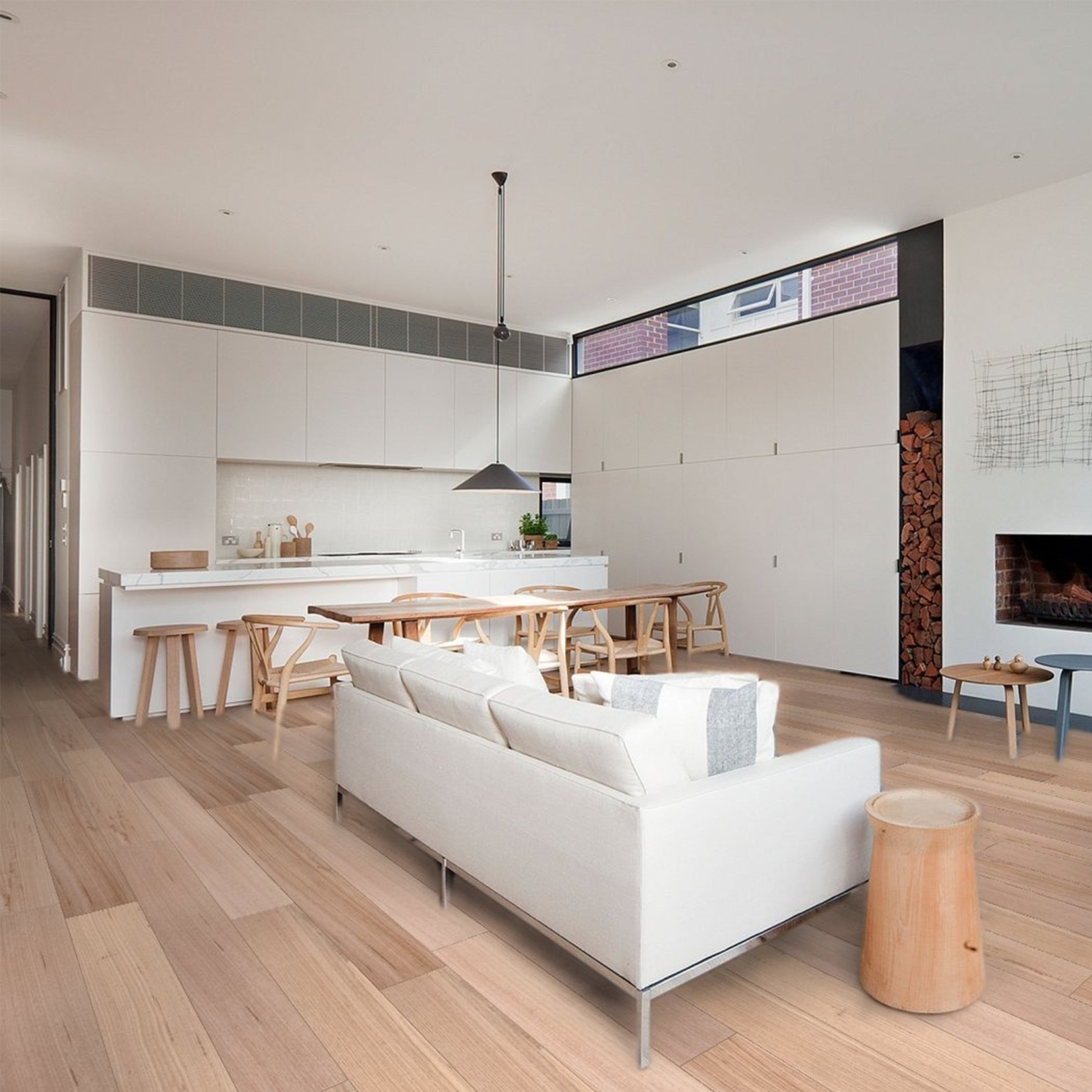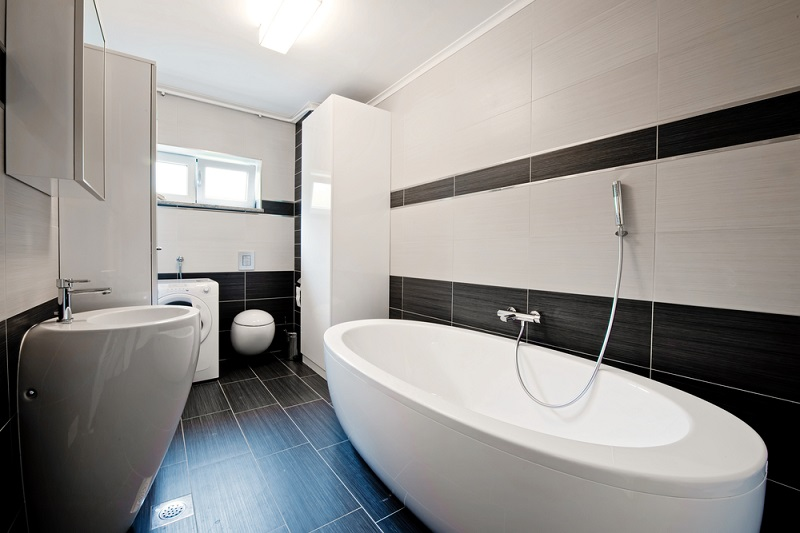When you’re outfitting your home with premium flooring, there’s something timeless and elegant about solid timber. Natural hardwood floors lend warmth, character, and durability – especially when selected thoughtfully for the Australian environment. In this post we’ll guide you through what “solid timber flooring” really means, why it works so well for Australian homes, and then explore the best native species you should consider – along with practical selection and maintenance tips.
What is solid timber flooring?
Solid timber flooring refers to floorboards made from a single piece of hardwood (not layered or engineered). It offers several benefits:
- Authenticity: Each plank is natural wood, showing unique grain patterns and colour variation.
- Refinishing potential: Because the board is full-thickness timber, you can sand and refinish it multiple times over its life.
- Longevity: With proper installation and care, solid timber floors can last for decades — or generations.
However, there are trade-offs: solid timber is more sensitive to moisture and humidity compared to engineered floors; installation can be more demanding; cost is often higher.
Because you’re in Australia, choosing a species that tolerates local conditions (heat swings, humidity, even coastal salt air) is smart. Australian native hardwoods are very well suited to this.
Why solid timber works for Australian homes
Here are several reasons why solid timber is a strong choice for Australian homes:
- Adapted to the climate
Australian hardwood species have evolved to thrive in local conditions — many handle variation in temperature and humidity better than imported woods. - Durability & resilience
Many native species have very high hardness ratings (Janka hardness) and strong durability, meaning they resist dents, wear, and heavy foot traffic. - Sustainability & certifications
Purchasing Australian-harvested timbers that carry certifications (such as FSC® or PEFC™) means you support responsibly managed forests and reduce transport emissions. - Aesthetic fit
Native timbers offer colour tones and grain patterns that blend beautifully with Australian home styles — from modern coastal to traditional country. The variety means you can find something subtle or something with strong character. - Value-adding
A well-installed timber floor adds value to a home — both visually and structurally. It is seen as a premium finish.
Given these reasons, let’s look at some top species you should consider.
Top Australian timber species for solid flooring
Here are five standout species — each with its own look, feel and suitability.
- Spotted Gum
A very popular choice for Australian homes.
- Colour and grain: The grain is wavy and dynamic, and the colour palette ranges from light brown tones through to darker chocolate and even pinkish hues.
- Hardness and performance: It is among the harder species, making it suitable for high traffic areas.
- Ideal for: Spaces where you want a robust floor with strong character and natural variation.
- Considerations: Because of the variation in colour and grain, you might want to view full plank samples to ensure the tone suits your room.
- Blackbutt

A more classic, subtle timber choice.
- Colour and grain: Generally light brown to creamy tones, straight-grained and even textured.
- Performance: Strong structural strength and durability, even suitable for coastal homes because of moisture tolerance.
- Ideal for: Modern, understated interiors where you want a neutral wood floor that adapts to various decor styles.
- Considerations: Because it is more subtle, you may want to emphasise texture or finish (brushed, matte) to keep it from looking flat in larger rooms.
- Jarrah

For a richer, more dramatic timber flooring look.
- Colour and grain: Deep red-brown heartwood, expressive and warm.
- Performance: Extremely durable with natural insect resistance (good for termite-prone zones) and long life.
- Ideal for: Statement floors, traditional homes, or spaces where you want a “luxury” timber look.
- Considerations: The richness of colour means lighting matters — in darker rooms Jarrah might feel heavier. Also budgets may be higher relative to lighter species.
- Tasmanian Oak

A lighter timber option, popular for contemporary interiors.
- Colour and grain: Light straw to pale brown tones; subtle grain.
- Performance: While still a hardwood, it’s not as hard as the dense eucalypts, so more suited for moderate traffic zones.
- Ideal for: Bright, airy homes, Scandinavian/minimal style interiors, open-plan living where you want the floor to recede.
- Considerations: Because it’s lighter and less heavy in character, you might want to complement it with darker furnishings or contrast accents to add dimension.
- Grey Ironbark

The heavyweight when it comes to durability.
- Colour and grain: Multi-coloured hues, often dark, from chocolate to honey tones.
- Performance: One of the strongest native hardwoods; great for high-traffic commercial or family homes.
- Ideal for: Homes with pets or children, or any area where wear-resistance is a priority — e.g., entryways, hallways.
- Considerations: Because it’s very dense, it can be more difficult to saw or install, and it may cost more. Also the darker tones can affect room brightness, so plan lighting accordingly.
How to choose the right timber for your home
Here are some guiding questions and criteria to help you make an informed selection.
Traffic and usage
- In high-traffic areas (living rooms, entry halls, areas with pets or kids), go with a harder species (Spotted Gum, Grey Ironbark).
- In lower traffic zones (bedrooms, studies) you have more flexibility with species that are less dense.
Interior style & colour tone
- For light, bright, modern interiors: Tasmanian Oak or a pale finish.
- For warm, rustic or traditional: Jarrah, Brush Box (another option), or rich grain species.
- For neutral, adaptable backgrounds: Blackbutt.
- For striking, bold grain and variation: Spotted Gum.
Climate / location considerations
- Coastal locations: Ensure species cope with humidity and salt-air. Blackbutt is noted for its suitability.
- Homes with wide temperature/humidity swings: Native hardwoods tend to handle better than some imported woods.
- Sub-floor type: Installation over concrete slabs vs timber battens may influence choice and system.
Sustainability & sourcing
- Look for certifications like FSC®, PEFC™, or evidence of responsible forestry practices.
- Support local supply chains where possible (reduces transport, ensures suitability).
- Consider reclaim or recycled timber for an eco bonus (though this may not always be “solid timber” in the strict sense).
Finish, maintenance and lifespan
- Solid timber needs a good finish to protect the surface (coatings, stains).
- Factor in the need for possible re-sanding/refinishing later.
- Consider maintenance regime: protecting from scratching, dents, water exposure.
- Understand installation method: tongue & groove, secret nail, what sub-floor prep is required.
Installation & maintenance tips for solid timber floors
To ensure your timber floor looks great and lasts long, follow these important steps:
- Pre-installation site preparation
- Sub-floor should be level, clean, dry and within moisture tolerance for timber.
- Acclimate timber to the home’s internal environment (let boards settle).
- Check recommended installation method for your chosen species (nailed, floated, secret nailed).
- Appropriate board size & grade selection
- Board width and length influence look and movement. Wider boards make a room feel larger.
- Grade (select, standard, feature, heavy feature) affects grain variation and character. Choose based on your aesthetic.
- If you want less variation and cleaner look, choose a “Select” grade. For character, choose “Rustic/Feature”.
- Finish quality
- Use a quality finish (polyurethane, oil, water-based, UV cured) appropriate for your species and traffic.
- For homes with kids/pets, consider a tougher finish and add protective pads under furniture/legs.
- Routine care
- Sweep or vacuum regularly to avoid grit scratching surface.
- Use a damp (not wet) mop with a cleaner made for timber floors. Avoid excessive water.
- Use doormats to limit dirt and grit entry; trim pet nails as a precaution.
- Keep direct sunlight in check (UV can fade timber). Consider blinds or curtains.
- Long-term maintenance
- Over years your floor may show wear — you can sand and refinish to restore.
- Address any gaps, movement or moisture issues early.
Common pitfalls & how to avoid them
As with any premium finish, there are mistakes homeowners often make. Here’s how to steer clear:
- Choosing purely on price: A less expensive species may cost you later in maintenance or reduced lifespan.
- Ignoring sub-floor / environment conditions: Installing solid timber over a high-moisture slab without correct membrane or prep can lead to problems.
- Selecting a species that doesn’t suit the traffic: If you pick a softer wood for a busy household, you may regret it.
- Neglecting maintenance: Timber is durable but requires care — scratches, dents or water damage can accumulate over time.
- Overlooking certification: To protect both the environment and your investment, sourcing responsibly matters.
- Poor lighting or contrast: Dark timber in a poorly lit room may feel heavy; balance tone with room size and lighting.
Conclusion
Solid timber flooring is more than just a flooring option – it’s an investment in comfort, aesthetics and longevity. For Australian homes, choosing a native hardwood species gives you the best of durability, climate suitability and local sourcing.
- For a bold, expressive floor: consider Spotted Gum or Jarrah.
- For a streamlined, neutral look: Blackbutt or Tasmanian Oak.
- For high durability in busy zones: Grey Ironbark.
Whichever you choose, make sure you account for your home’s traffic level, lighting, climate conditions and style. Uncover the samples, understand the finish, check the certification, and plan for care. With the right choices, your solid timber floor can become a defining feature — one that holds value and character for decades.



